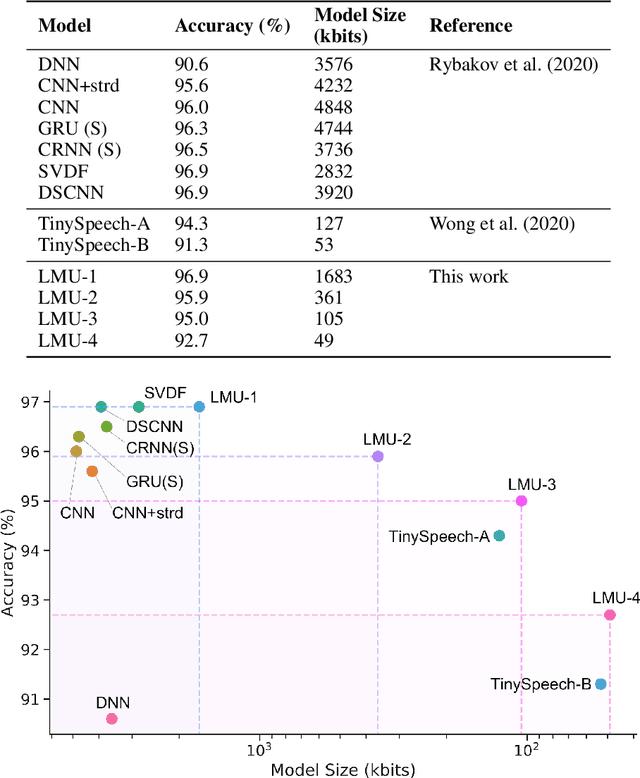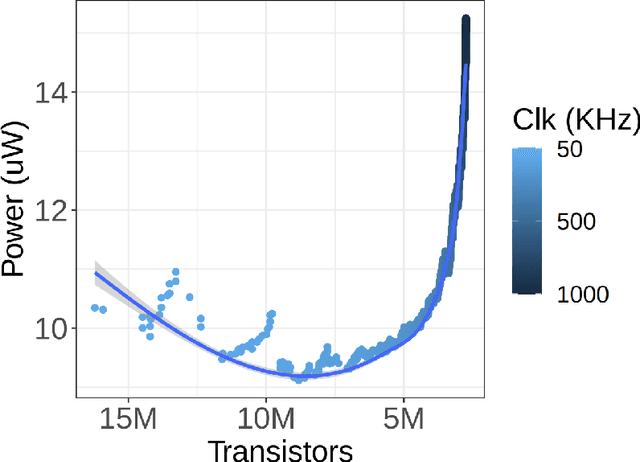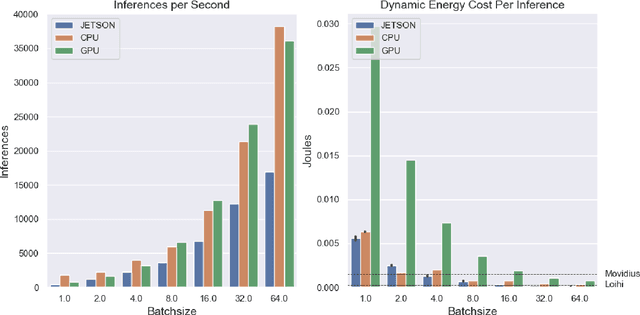Peter Blouw
Hardware Aware Training for Efficient Keyword Spotting on General Purpose and Specialized Hardware
Sep 23, 2020



Abstract:Keyword spotting (KWS) provides a critical user interface for many mobile and edge applications, including phones, wearables, and cars. As KWS systems are typically 'always on', maximizing both accuracy and power efficiency are central to their utility. In this work we use hardware aware training (HAT) to build new KWS neural networks based on the Legendre Memory Unit (LMU) that achieve state-of-the-art (SotA) accuracy and low parameter counts. This allows the neural network to run efficiently on standard hardware (212$\mu$W). We also characterize the power requirements of custom designed accelerator hardware that achieves SotA power efficiency of 8.79$\mu$W, beating general purpose low power hardware (a microcontroller) by 24x and special purpose ASICs by 16x.
Benchmarking Keyword Spotting Efficiency on Neuromorphic Hardware
Dec 04, 2018



Abstract:Using Intel's Loihi neuromorphic research chip and ABR's Nengo Deep Learning toolkit, we analyze the inference speed, dynamic power consumption, and energy cost per inference of a two-layer neural network keyword spotter trained to recognize a single phrase. We perform comparative analyses of this keyword spotter running on more conventional hardware devices including a CPU, a GPU, Nvidia's Jetson TX1, and the Movidius Neural Compute Stick. Our results indicate that for this inference application, Loihi outperforms all of these alternatives on an energy cost per inference basis while maintaining near-equivalent inference accuracy. Furthermore, an analysis of tradeoffs between network size, inference speed, and energy cost indicates that Loihi's comparative advantage over other low-power computing devices improves for larger networks.
 Add to Chrome
Add to Chrome Add to Firefox
Add to Firefox Add to Edge
Add to Edge